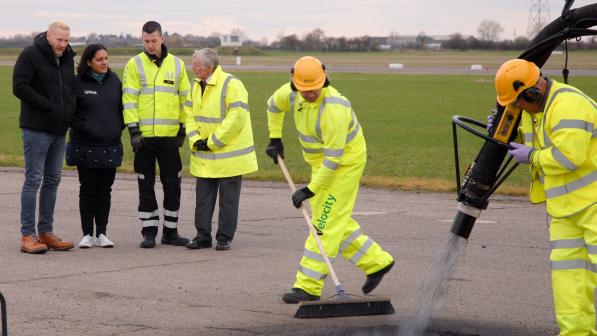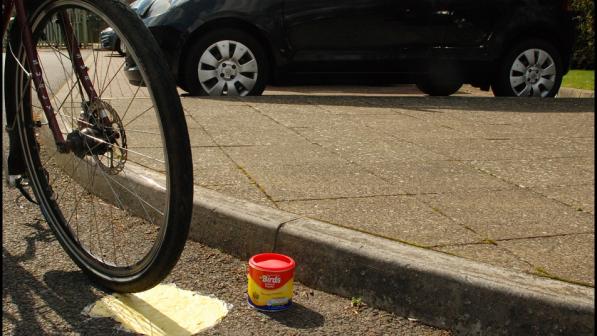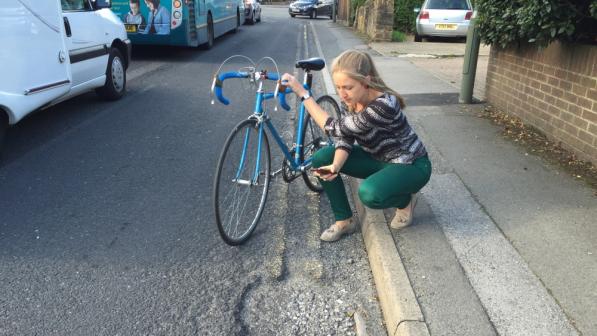Guidance on pothole repairs needs attention, says coroner

When police examined the carriageway near to where Mr Hamer fell on Bury New Road, Ramsbottom, they identified three potholes, the largest being 0.6m wide (at its widest point), 1.5m long and generally in excess of 50mm deep. According to images from Google Streetview, the pothole was already there and showing signs of deterioration, wear and cracking in October 2015.
Although an inspector visited the carriageway in both January and February 2016 (the latter visit in response to a local resident’s complaint), he didn’t record any details of the condition of the carriageway in the location where the pothole in question was found. On his second visit, however, he issued instructions to repair a nearby pothole within 28 days, which would have extended to this one too. Sadly, the repairs were not completed until after Mr Hamer fell from his bike.
In his ‘preventing further deaths report’ (PFD) sent to Bury MBC, Mr Peter Sigee, assistant coroner for Greater Manchester North, mentions these specific failings, but goes on to consider the alarming implications of the council’s ‘new procedure’. According to this report, at the time of the incident involving Mr Hamer, Bury MBC was set to change its 'intervention' level (where it expects to repair a defect of 40mm deep or over), to an ‘investigation’ level. This means that an inspector may investigate a 40mm defect, but not necessarily have it repaired, and possibly not trouble to investigate a shallower one at all. Cycling UK has been led to believe that Bury MBC has since changed its policy following the coroner's report.
The coroner sent his PFD to the Secretary of State too because he found that the authority’s new procedure was “apparently” based on 'Well-Managed Highway Infrastructure: a Code of Practice' (2016), commissioned by the DfT and published by UK Roads Liaison Group.
The depth of a defect is by no means the only factor that needs to be taken into account when considering the comfort and safety of cyclists - the shape and/or location of a defect may be the main problem.
Cherry Allan, Cycling UK's Campaigns and Policy Information Co-ordinator
In fact, it’s up to highway authorities to make the call over the depth at which to prioritise repair, and 40mm is simply the one that most of them typically choose. It isn’t forced on them by the Code either for ‘intervention’ or ‘investigation’ purposes and, even if it were, the advice is not statutory. Indeed, it states that adopting its recommendations is a matter for each authority “based on their own legal interpretation, risks, needs and priorities”.
Cycling UK stresses that the depth of a defect is, in any case, by no means the only factor that needs to be taken into account when considering the comfort and safety of cyclists. In fact, the shape and/or location of a defect may be the main problem, regardless of how deep it is - our briefing on highways maintenance explains this in more detail.
It seems clear, though, that neither the Code nor Bury MBC’s interpretation of it prevented the formation and continued existence of the pothole that caused Roger Hamer to fall from his bike. As the coroner asked both Bury MBC and the Secretary of State for Transport to respond formally to his PFD report by 16 October, and neither’s response has yet been published, Cycling UK is endeavouring to ensure that this matter is raised directly with the Secretary of State in Parliament next week.
- Read the coroner’s report
Notes:
The authors of the Code of Practice say they decided to use the term ‘investigatory level’ instead of ‘intervention level’, “… as failure to reach the defined level in most cases could give rise to a range of responses each of which needs to be further investigated, prior to action being taken. There will be certain circumstances, of course, primarily for safety reasons, where an immediate response is necessary.”
In the Autumn Budget, the Chancellor said the government is investing an additional £45 million in 2017-18 to tackle around 900,000 potholes across England. According to this year’s ALARM survey from the Asphalt Industry Alliance, however, the estimated ‘one-time catch-up cost’ needed for England outside London is considerably more than this - £10.78 billion, to be exact (it’s £686.1 million for London, and £591.5 million for Wales).



